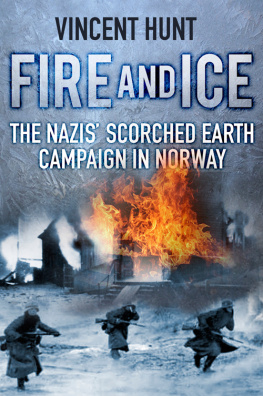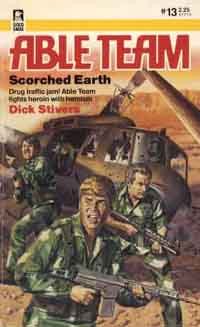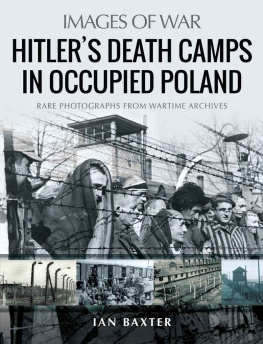
The writing of this book has depended on much generosity and kindness from many people. Wideroe Airlines flew me across Finnmark and Troms to see for myself the locations of the incidents included here and to meet the people who talk about them so vividly. The hotel groups Rica and Radisson Blu helped too and Hilde Chapman at the Norwegian Embassy in London was a key figure in making this project a reality.
I am grateful to Mette and yvind Mikalsen for talking to me about the tragedy of Hopseidet. My special thanks go to Alf Helge Jensen of the Finnmarken newspaper for translating and Oddvar Jensen, owner of Mehamns Arctic Hotel, for lending me his Mitsubishi Galant. Gunnar Jaklin was a treasure trove of stories and an encyclopedia of facts in Troms while artist Grethe Gunning told me tragic but wonderful stories in Djupvik and introduced me to Roald Berg, who gave me a carved wooden Sami drinking cup as a reminder of my trip. The evergreen Pl Fredriksen guided me around Nordreisa and climbed the Fals mountain to show me the Lyngen Line; Storfjord Mayor Sigmund Steinnes opened his secret files for me.
Film director Knut Erik Jensen was a mine of information in Honningsvg, as was Rune Rautio in Kirkenes. Karin Johnsen made several important calls for me and told stories I could barely believe then and now. Author Roger Albrigtsen of the FKLF cleared up many of my queries and offered advice on events in Porsangerfjord: Lieutenant Commander Wiggo Korsvik of the Norwegian Explosive Clearance Commando shared details of ammunition finds.
I am deeply indebted to Michael Stokke of the Narvik Peace Centre for his expertise on prisoners of war and his generosity and patience. I am extremely grateful to Torstein Johnsrud at Gamvik Museum, Yaroslav Bogomilov and Nina Planting Mlman at the Museum of Reconstruction in Hammerfest (Gjenreisningsmuseet for Finnmark og Nord-Troms) and Camilla Carlsen, Bodil Knudsen Dago and Berit Nilsen at the Grenselandsmuseet in Kirkenes.
Thanks to historian Kristian Husvik Skancke for his time, knowledge and guidance, and to Professor Frederik Fagertun at Troms University who was kind enough to advise on aspects of the project.
Special mention must be made of Mrs Bjarnhild Tulloch, a survivor of the scorched-earth policy in Kirkenes and whose childhood memoir Terror in the Arctic one of the few accounts of the time in English was a significant research guide. For her kindness in recommending me to her friends Svea Andersen, Eva Larsen and Knut Tharaldsen, as well as Inga and Idar Russveld, I cannot thank her enough.
Curt Hanson, Head of the Elwyn B. Robinson Department of Special Collections at the University of North Dakota gave me permission to use the Nuremberg trial transcripts from his archive. yvind Waldeland kindly released pictures from the archive of Oslos Defence Museum.
My friends Ian Muir, David Ford and Simon Price offered encouragement throughout, as did Shaun Barrington of The History Press. My thanks also go to Chris Shaw, who did the copyediting.
Finally, special thanks go to my wonderful wife Daiga Kamerade and my son Martins Vitolins. Their patience and humour helped keep me sane and sustained me in the many hours of research and writing required.
Vincent Hunt
Manchester, England
CONTENTS
Map 1: Norway north of the Arctic Circle Finnmark and Nord-Troms
2. Kirkenes after the German withdrawal
3. The destruction of Kirkenes
4. German supplies in Kirkenes
5. Eva Larsen and Knut Tharaldsen
6. A rare pre-war building in Kirkenes
7. House built on anti-aircraft gun bunker in Kirkenes
8. Finnkonckeila, burned by the Germans during the war
9. Torstein Johnsrud, curator of Gamvik museum
10. Memorial stone at Hopseidet
11. Mette and yvind Mikalsen with the author
12. Makeshift hut near Gamvik
13. Nazi officers inspect coastal gun battery site
14. SS troops in Skoganvarre
15. German soldiers bury at comrade in Lakselv
16. The white church in Honningsvg
17. The burning of Hammerfest
18. The total destruction of Hammerfest
19. A German barracks band in Lakselv
20. Gun bunker at Djupvik
21. Artist Grethe Gunning with Roald Berg
22. The Lyngen mountains
23. Pl Fredriksen at the Lyngen Line
24. A reconstructed German bunker at the Lyngen Line
25. Gunnar Jaklin at the Troms Defence Museum
26. The road to the Mallnitz death camp near Skibotn
27. Soviet POWs in May 1945
28. Emaciated Soviet POW, 1945
29. Vidkun Quisling, leader of Norways Nazi puppet regime
30. The scorched-earth burning of Finnmark, 1944
FRONT: Composite of Hammerfest in flames and German soldiers attacking through a burning Norwegian village during the 1940 invasion. Picture by Erich Borchert, provided by the German Federal Archive.
BACK: The church in Honningsvg was the only building to survive the scorched-earth burning of Finnmark following the German retreat in October 1944. Picture used with permission of the Nordkappmuseet in Honningsvag.
This book is a collection of stories about the destruction and evacuation of northern Norway during the Nazi scorched-earth retreat of October 1944 to May 1945. Its focus is the counties of Finnmark and Troms lying to the far north of the Arctic Circle. Finnmark, west of the Tana River, was reduced to ashes in the retreat and emptied of civilians. The Nazi troops Austrians, mostly fell back to a fortified defensive line in the mountains near the Lyngen fjord where they planned a stand against an Allied invasion that never came.
This is a book of social memory: of towns bombed and burned flat with violent death and secret tragedies round every corner; of unspeakable cruelty, misery and brutality, with skinny malnourished children and hollow-eyed prisoners at every turn. The author crossed the region meeting ordinary Norwegians who describe extraordinary experiences or tell how their families and friends fared in a time of great disruption and dislocation. All these stories have been gathered by the author in English but they are Norwegian stories - of death, destruction and trauma in a beautiful land of rugged coastlines, jagged mountains and sub-zero temperatures.
Seventy years on, that land is still stained from its encounter with evil. There are Nazi bullets still in the ground and rusty barbed wire still around trees. Pensioners still have nightmares, and reinforced concrete gun bunkers are still standing, too well built to crumble. They seem as if they will never crumble but will always be there, gazing silently out to sea.
Even today, the war is never very far away in Finnmark. Its been bottled up in peoples heads for seventy years and the fears have been passed down through two generations since. That third generation can walk into a forest today and still find traces of the war.
One elderly lady in the shattered, battered northern town of Kirkenes said to me: We used to say Will we never be rid of this war?
The answer is no, not yet. The war is still here.

Next page










